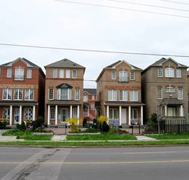 What do the words neighbourhood demographics mean to you? Pretty much everything you want to know about who lives in a particular neighbourhood and the composition of their families. How is this useful? A number of different way. For example, neighbourhood demographics can help you tell investors where there is high rental potential in a particular neighbourhood or perhaps highlight an area that a family starting out may not want to live.
What do the words neighbourhood demographics mean to you? Pretty much everything you want to know about who lives in a particular neighbourhood and the composition of their families. How is this useful? A number of different way. For example, neighbourhood demographics can help you tell investors where there is high rental potential in a particular neighbourhood or perhaps highlight an area that a family starting out may not want to live.
So what demographics are really relevant and how can they be leveraged? When looking at neighbourhood demographics there are 4 key areas that you may want to hone in on.
- Population – this deals with family composition. Naturally people want to live in neighbourhoods where other families similar to theirs live. You can’t tell by looking at the outside of a home how many people in the neighbourhood are married, single, have children or don’t, age distribution, etc… Perhaps seniors that are downsizing would like to live in a quiet community that has a higher population of older residents. On the marketing side, looking at trends in the population can enable you to adjust your messaging to hone in on niche markets in the area you serve.
- Households – this deals with the types of properties in the area and how they are being used. You want to be able to know percentages of owned vs rented properties for both investors and families who may not want to live in neighbourhoods that have a high % of renters. Average sizes and ages of homes in the area are also very relevant demographics that you want to know and be able to discuss with your clients. You can also use this information to identify shifts in neighbourhoods and what it could potentially mean to you later if you cater to a particular market but the face of the community you are working in is changing.
- Socio Economic – Back on the theme that people want to live in communities that have other people like them – many buyers would probably like to know things like the education levels in a community. The type of worker – white collar vs blue collar, dominant professions etc… Socio economics also play a huge roll in marketing. The needs of a family can change depending on income levels, likes and education. Targeted marketing works better. Again, knowing the people in the community you are marketing in enables you to come up with marketing initiatives that connect with prospects.
- Cultural – Cultural demographics are important not just for your clients but also to you in terms of your marketing efforts. Cultural demographics highlight ethnicities, religions and dominant languages of people who live in a community. From the perspective of your marketing – identifying neighbourhoods that have common cultural demographics can enable you to look at marketing in ethnic magazines or even in other languages.
Knowing the demographics of the neighbourhoods you serve, for obvious reasons, makes you more knowledgeable and able to offer a higher level of service – and it also makes you more agile because you can diversify your marketing and even messaging according to the communities you are marketing in.
If you would like information about a tool that helps you access all of the above neighbourhood demographics information and more please visit www.geowarehouse.ca.







